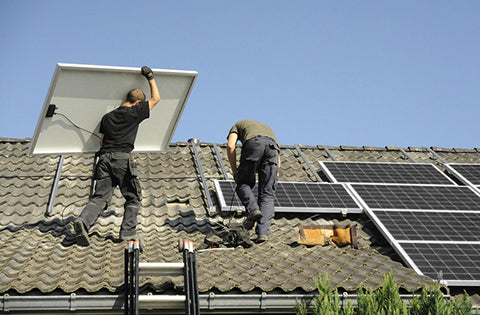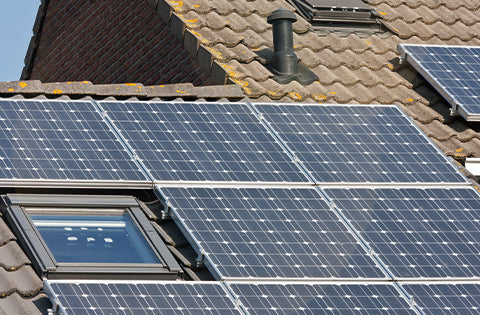
What Factors Determine Solar Panel Output?
To accurately calculate the energy production of a solar panel, it’s essential to understand the two primary factors that determine its power output: cell efficiency and panel size.
Cell efficiency refers to the ability of the solar cells within the panel to convert sunlight into electricity. Higher cell efficiency means that more sunlight is converted into usable electricity, resulting in higher power output. Factors that affect cell efficiency include the quality of the materials used to make the cells, the design of the cells, and the manufacturing process.
The size of the solar panel also plays a critical role in determining its power output. The larger the panel, the more solar cells it can accommodate, resulting in higher solar panel output. However, larger panels may also be more expensive and require more space for installation.
Other factors that can impact solar panel output include shading, orientation, and temperature. Shading can reduce the amount of sunlight that reaches the panel, while an improper orientation can limit the amount of sunlight the panel can absorb. Temperature can also affect panel output, as solar cells operate less efficiently at high temperatures.
By understanding the key factors that impact solar panel output, you can make informed decisions when selecting and installing solar panels to meet your energy needs.
Solar Panel Efficiency
Efficiency is one of the most critical metrics to consider when shopping for solar panels. A panel’s efficiency determines how much power it can produce. Most silicon-based solar cells today can convert between 18 and 22 percent of the sunlight that hits them into usable solar energy. Higher efficiency means more energy and high-efficiency solar panels will typically produce more electricity for your home. As of 2022, the National Renewable Energy Laboratory (NREL) has developed the most efficient solar cell to date, with an efficiency of 39.5 percent.
Number Of Solar Cells And Solar Panel Size
In addition to efficiency, the number of solar cells and the size of the panel also play a significant role in determining its power output. Solar panels can typically be divided into two size groups: 60-cell and 72-cell panels. A 60-cell solar panel is approximately 5.4 feet tall by 3.25 feet wide and has an output of about 270 to 300 watts. On the other hand, a 72-cell panel is larger and has an extra row of cells, with an average output between 350 to 400 watts. These larger 72-cell panels are typically used in commercial solar projects and on larger buildings, rather than on residential homes.
By understanding the importance of efficiency, the number of solar cells, and the size of the panel, you can make informed decisions when choosing the right solar panel to meet your energy needs.
Environmental Factors: Shading, Orientation, And Hours Of Sunlight
While solar panel efficiency and the number/size of solar cells are key factors in determining a solar panel’s rated power, other environmental factors play a role in the actual amount of energy it can produce.
Shading is a significant factor that can lower a panel’s production, as the wattage rating does not account for the impact of shade.
For more information, please follow XINPUGUANG official website:
Facebook: Xinpuguang Solar Panel Instagram: xinpuguangsolar
Pinterest: XinpuguangSolarPanels
Homepage: https://xinpuguangsolar.com
Email address: Philip@isolarparts.com
- 選択範囲を選択すると、ページ全体が更新されます。


